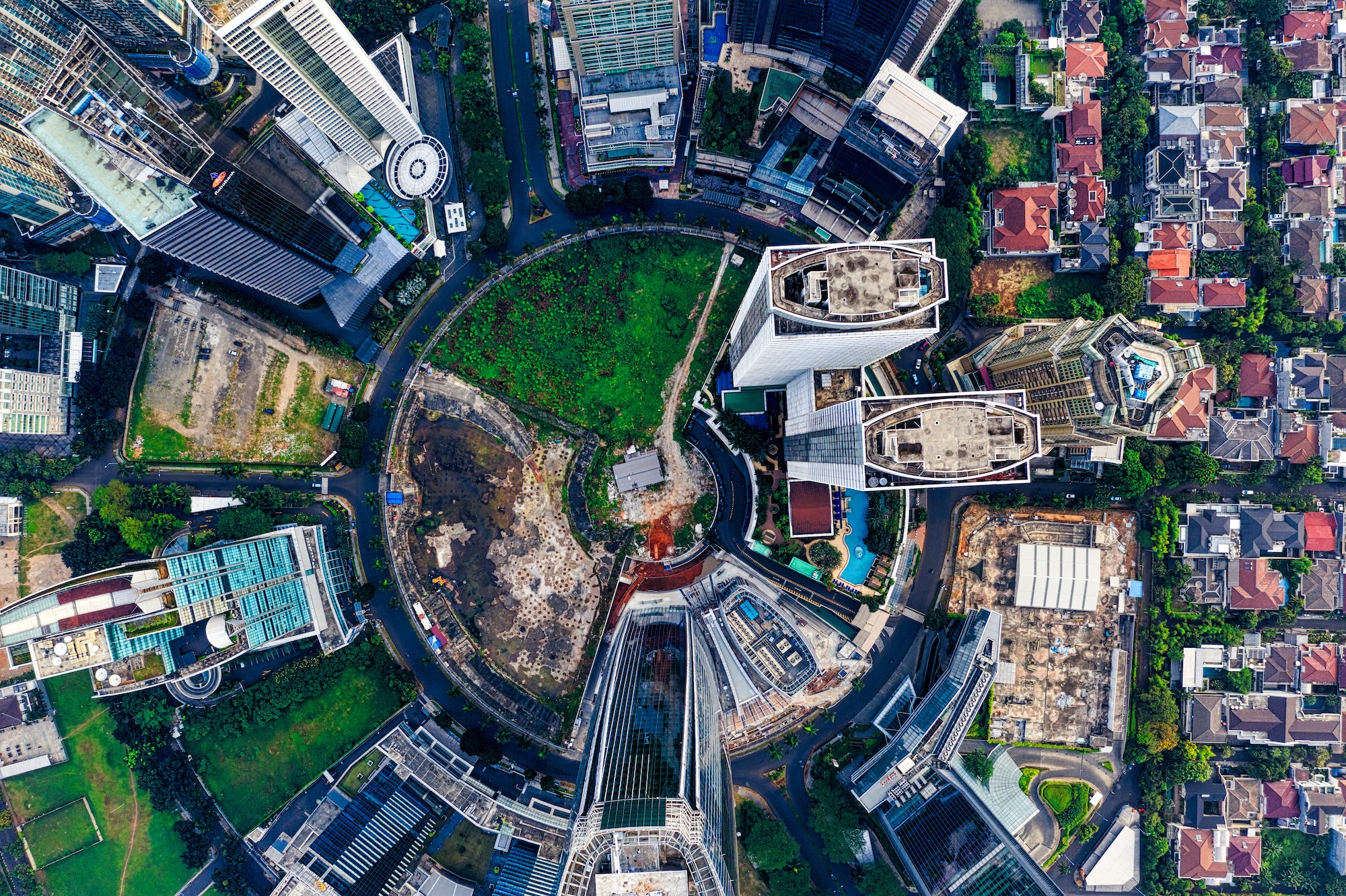
“The art of crisis and pirate architectures”
The need for constant adaptation naturally requires a new way of looking at the city and its urban planning. According to Marco Stathopoulos, architect and author of L’architecture comme art de la crise. Vers une résilience urbaine, “the resilient city is flexible and adaptable, […] risk is part of its foundation, as are the resources that can emerge from it.” By definition, this dynamic equilibrium does not go well with the determination of fixed principles. However, there are recurring schemas specific to promoting urban malleability. In a book published in 2021, the Plan Urbanisme Construction Architecture emphasises that “sobriété foncière (literally translated as ‘real estate sobriety’, meaning to control urban sprawl and protect agricultural land and remarkable natural sites) is to be combined with offering quality open spaces by incorporating into a project water, landscapes, nature and biodiversity. Renaturing urban environments and restoring wildlife corridors (green and blue corridors) is necessary for fighting against biodiversity loss and reducing heat islands thanks to depaving and urban ventilation corridors.” In another study, La Fabrique de la Cité details the importance of resource management, circular economy, new forms of urban agriculture, modular and flexible urban planning and, overall, developing a truly systemic way of thinking. In fact, beyond the most ambitious institutional programmes, these main principles give rise to initiatives that are more or less structured, always inventive and sometimes surprising. And it’s these unique initiatives that we wanted to highlight in our cabinet of curiosities.
Food: cities looking to feed themselves
The percentage of food self-sufficiency in French cities is now around 2%. At the same time, it’s estimated that 80% of all food in the world will be consumed in cities by 2050. While it’s only normal that urban areas do not produce all of their own food, “feeder cities” can reduce vulnerability to crises and logistical dependencies while also promoting social cohesion. In Argentina, the city of Rosario was awarded for its food programme whereby vacant land was turned into urban food gardens where low-income residents can cultivate food. The system is now a model of inclusion through agriculture. The Indian city of Rourkela has set up a system of public fridges to limit the losses of small market gardeners. Meanwhile in France, the startup Cycloponics is turning urban underground wastelands into food production hubs.
Density: malleable cities between inflow and outflow
In 2022, the engineer Philippe Bihouix published his plea for “stationary cities” that avoid urban sprawl without becoming denser. As such, he urged us to transform, enhance and make the best use of existing buildings and structures. In actual fact, some cities are already exploring forgotten urban spaces. Take Helsinki, which in 2011 published its Underground Master Plan designed to promote urban resilience. The aim is to transfer more urban functions underground in order to relieve population density tension above ground. On the other end of the scale, cities like Baltimore are dealing with a de-population trend. “Smart shrinkage” thus enters the conversation, an approach of smart decline combining community participation, planning expertise and technology designed to guarantee continued quality of life for its inhabitants.
Nature: cities’ essential ally
A study published in 2022 by researchers from the Institute for Global Health in Barcelona established a fairly simple rule for promoting urban mental health and wellbeing: 3 – 30 – 300. In order to promote better mental health, the rule is that every citizen should be able to see at least three trees from their window, living in an area that has 30% tree canopy cover and less than 300m from the nearest park. This strong correlation between urban nature and our health makes the case for a real renaissance of bio-inspired urbanism. The movement for biophilic cities – that is, cities which are better connected to the natural ecosystems on which they are formed – embodies this return to a wilder and less sanitised city.
Disasters: cities prepared for climate change
Intensified by global warming, major natural disasters are likely to increase in frequency, which in turn is pushing cities to stop behaving like the oak in favour of the reed. Take sponge cities, which embody these new modes of adaptation and are designed in symbiosis with nature, for example, by developing blue corridors (wetlands continuity), or using new materials, such as AquiPor’s porous concrete or Rain(a)Way’s draining slabs. In a similar vein, New York City officials have decided to implement nature-based solutions to protect Staten Island from waves in the aftermath of Storm Sandy. The Living Breakwaters project is based on a study of marine ecosystems to limit risks while preserving natural habitats.
Smart: technology as both a risk and a solution
When we talk about resilience, digital technology stands out as both a vulnerability and part of the solution for cities. In this context, cities like Rotterdam are developing cyber-resilience programmes aimed at ensuring a city’s digital security. Its FERM programme aims to reduce the famous Dutch port’s vulnerability to cyber risks. Elsewhere, other digital solutions are being used to optimise urban resource management. In Germany, a digital twin of the Cuxhaven water treatment plant has helped reduce annual electricity consumption by 1.1 million kWh – enough energy to power 275 homes for one year!
Adaptability, malleability, resilience, reversibility: the combination of climate, health and economic crises has highlighted the need for a less rigid city and one in perpetual motion. After centuries of strict urban planning, urban design seeks to reconnect with its environment and with nature, built in the form of a heterarchy capable of limiting dependency.